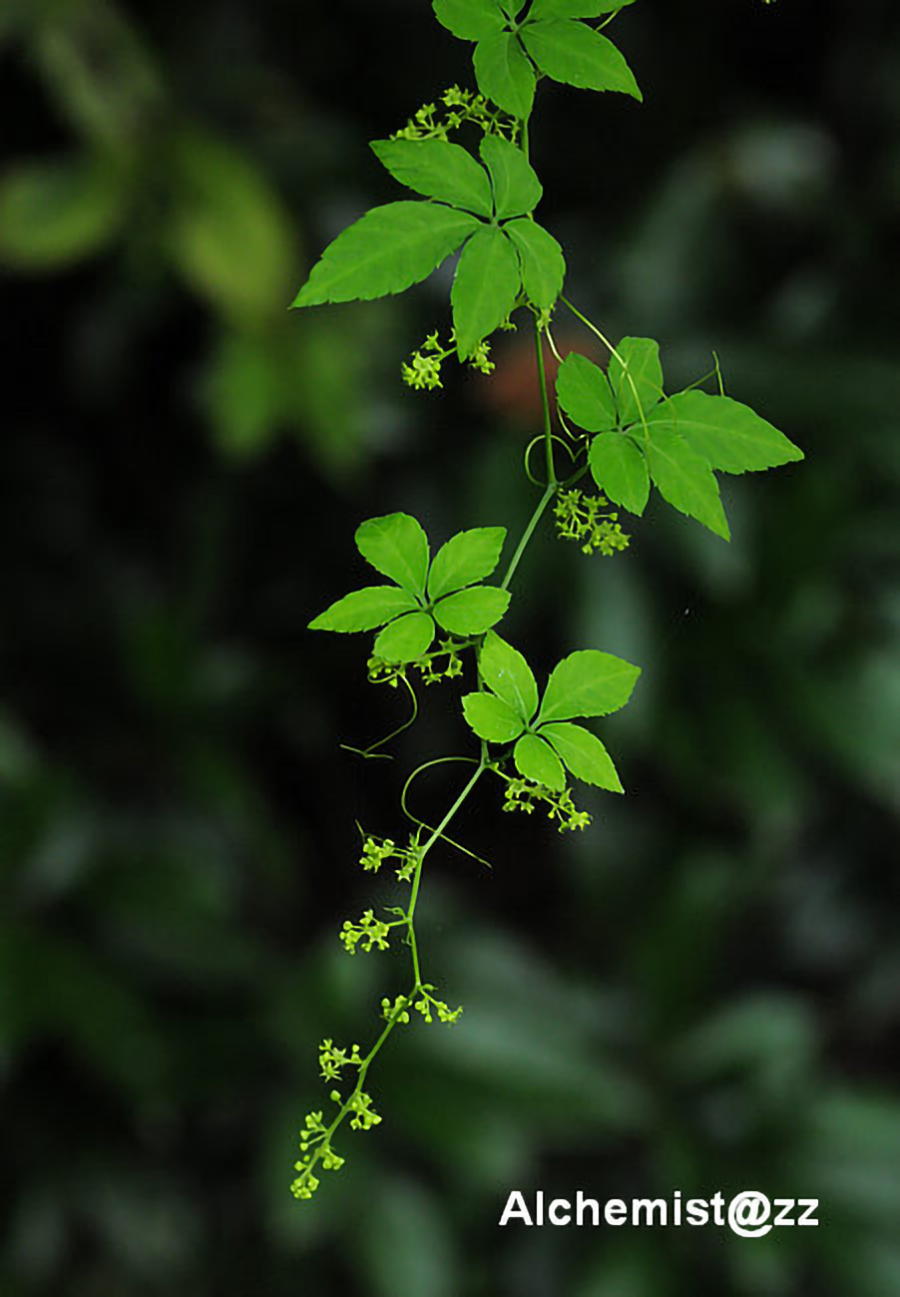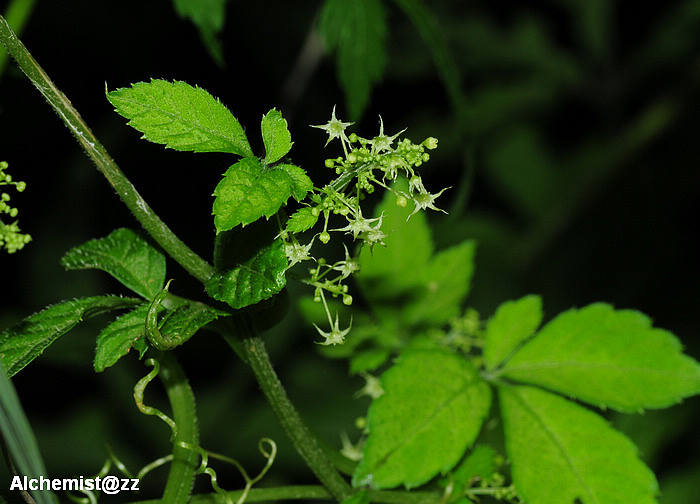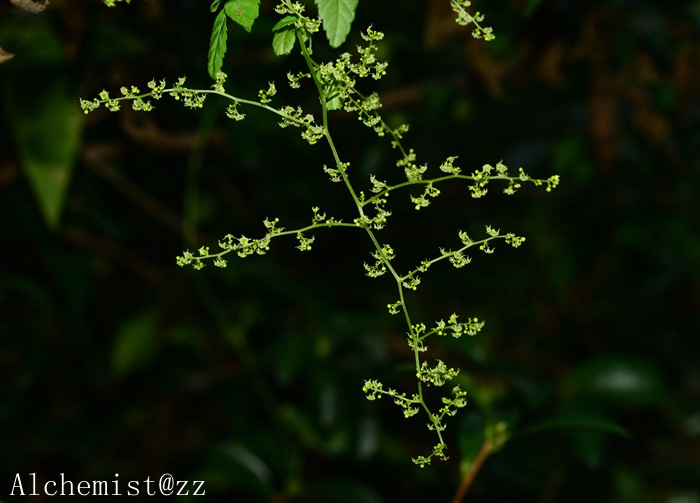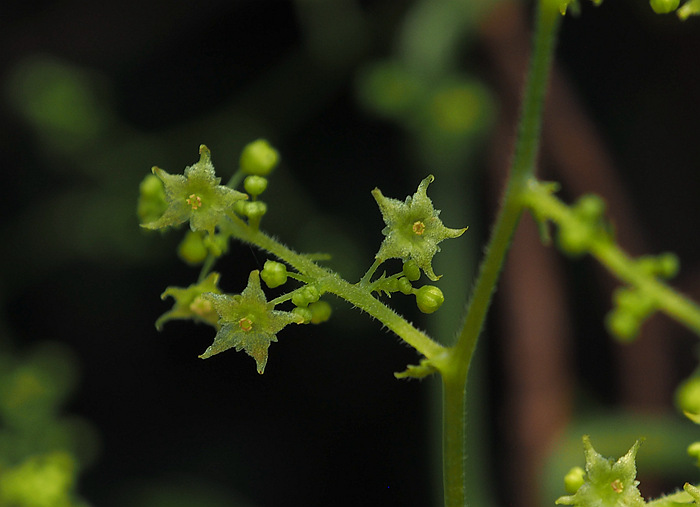绞股蓝 Gynostemma pentaphyllum

- Scientific Name: Gynostemma pentaphyllum (Thunb.) Makino
- Ref: Bot. Mag. (Tokyo). 16:179. 1902
- English Common Name: five-leaves gynostemma
- Chinese Common Name: 绞股蓝 jiǎogǔlán
- Japanese Common Name: アマチャヅル [甘茶蔓] amachazuru
- Family: Cucurbitaceae
- Genus: Gynostemma
- Distribution: Forests, thickets or roadsides on mountain slopes; 300-3200 m. Anhui, Fujian, Guangdong, Guangxi, Guizhou, Hainan, S Henan, Hubei, Hunan, Jiangsu, Jiangxi, Shandong, Sichuan, Taiwan, Yunnan, Zhejiang [Bangladesh, Bhutan, India, Indonesia, S Japan, S Korea, Laos, Malaysia, Myanmar, Nepal, New Guinea, Sri Lanka, Thailand, Vietnam].
Stem and branches slender, angular-sulcate, glabrous or sparsely pubescent. Leaves pedately 3-9-foliolate, usually 5-7-foliolate, membranous or papery, pubescent or glabrous; leaflets ovate-oblong or lanceolate, median leaflets 3-12 × 1.5-4 cm, lateral leaflets smaller, both surfaces sometimes hispid, lateral veins 6-8 pairs, base attenuate, margin crenate, apex acute or shortly acuminate; petiolule 1-5 mm. Tendrils filiform, 2-fid. Male flowers in panicle; peduncle filiform, 10-15(-30) cm, many branched; pedicels filiform, 1-4 mm; bracteole subulate; calyx tube very short; segments triangular, ca. 0.7 mm, apex acute; corolla pale green or white; segments ovate-lanceolate, 2.5-3 × ca. 1 cm, 1-veined, apex long acuminate. Female flowers: panicle shorter than that of male flowers; calyx and corolla as in male flowers; ovary globose, 2- or 3-loculed; styles 3; stigmas 2-lobed; staminodes 5, short. Fruit indehiscent, black when mature, globose, 5-6 mm in diam., 2-seeded, glabrous or densely hispid and pubescent. Seeds brown, ovate-cordate, ca. 4 mm in diam., compressed, both surfaces papillose, base cordate, apex obtuse. Fl. Mar-Nov, fr. Apr-Dec. (Flora of China)

Mt. Emei, Sichuan

09/09/2015, HZBG, Zhejiang

09/23/2016, Hangzhou, Zhejiang